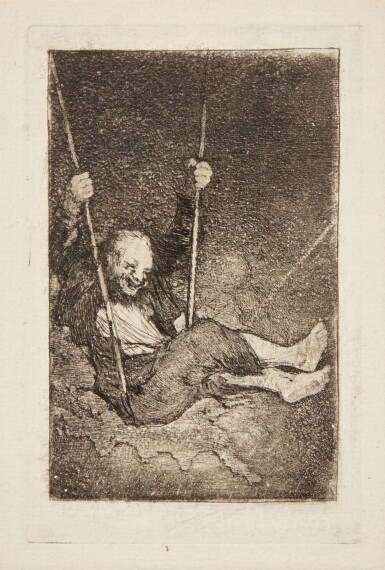Auctions
Buy Now
Collectibles & More
Books & Manuscripts
Freddie Mercury: A World of His Own | At Home
Freddie Mercury: A World of His Own | At Home

Los Caprichos (Seven Plates)
Auction Closed
September 8, 06:42 PM GMT
Estimate
2,000 - 3,000 GBP
Lot Details
Description
Francisco José de Goya y Lucientes
1746 - 1828
Los Caprichos (Seven Plates)
seven etchings with burnished aquatint, engraving, and drypoint on laid paper
each sheet approx.: 30 by 20cm., 11¾ by 7⅞in.
Executed 1797-98; from the first edition of approximately three hundred sets.
(7 prints)
Freddie's love for Goya is well captured in a story told by his personal assistant Peter Freestone in his 2023 memoir Right Time, Right Place (p.148): when browsing in an antiques shop in Madrid, Freestone recounts, Freddie clapped his eyes on a beautiful Goya and was instantly seized by it. Undeterred by the price tag over a million, Freddie began negotiations, but complication set in when the painting was not granted an export license to leave Spain. This was less of a deterrent than expected, since the solution to this would be to buy a house in Spain, Freddie decided. Only a remarkable one would do, though, and so Freddie almost ended up purchasing a Gaudi-designed property in Santander for the sake of this one Goya painting!
These seven prints from Francisco Goya’s renowned series Los Caprichos are the earliest works by a Spanish master in Freddie’s collection. A body of work that shook the very foundations of 18th-century Spanish society, created between 1797 and 1798 and then published in 1799, Los Caprichos delved deep into the vices,
corruption and superstitions that plagued a nation known as Black Spain. Goya’s intent was to experiment artistically while
offering a scathing critique of the follies and absurdities prevalent in Spanish society at the time. Through these prints, he exposed
a wide range of criticisms, revealing the dominance of superstition, the ignorance of the ruling class, educational deficiencies, marital missteps and the erosion of rationality.
The painter aptly described this series as a depiction of the flaws found in any civilised society, as well as the prevailing prejudices
and deceptive practices that have become commonplace. Accompanying each image, brief explanations in a manuscript housed in the Museo del Prado shed light on Goya’s enigmatic intentions. Though the language of the captions may appear somewhat elusive, they were likely interpreted as veiled references to well-known governmental and aristocratic figures. Despite initially being available for sale, Los Caprichos were ultimately withdrawn from circulation. This series stood as a potent critique not only of 18th-century Spain but also of humanity at large, encapsulating the spirit of the Enlightenment.